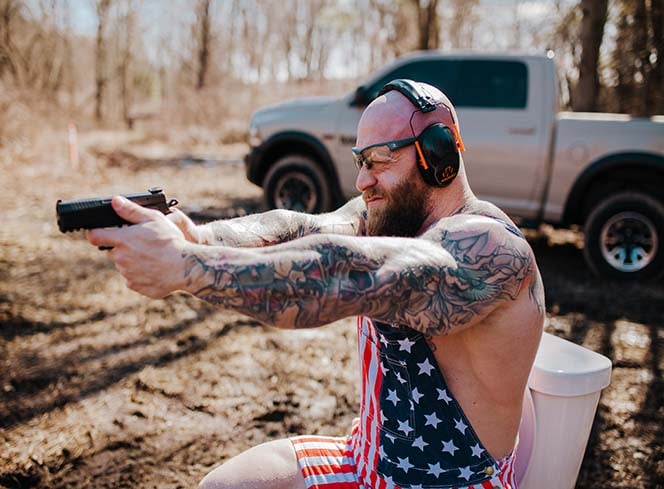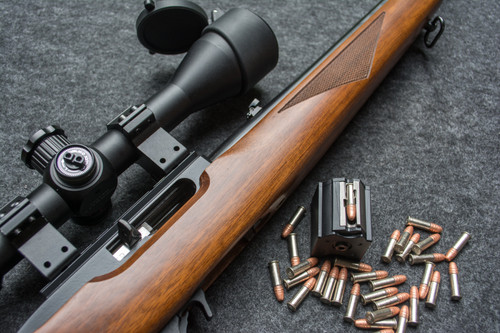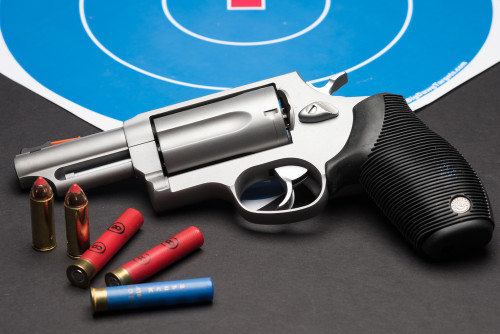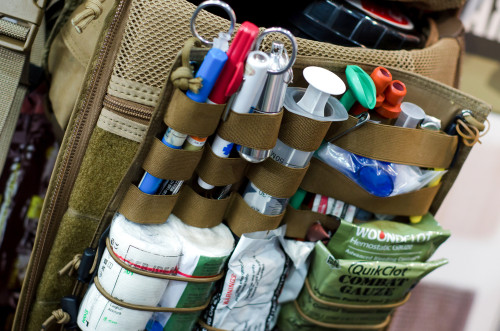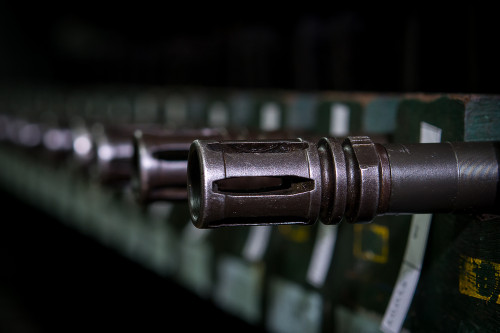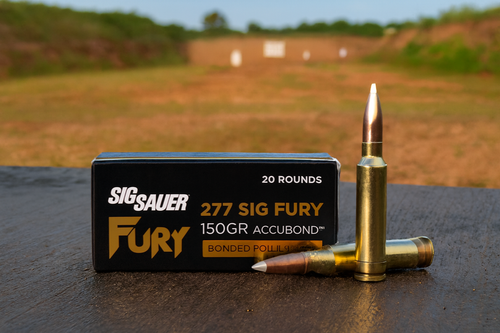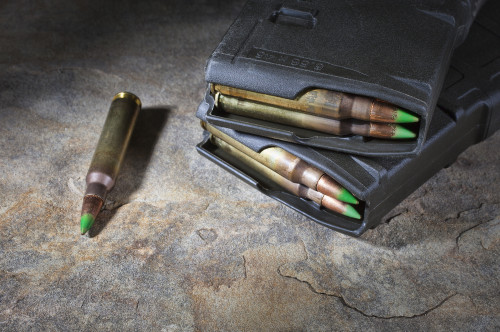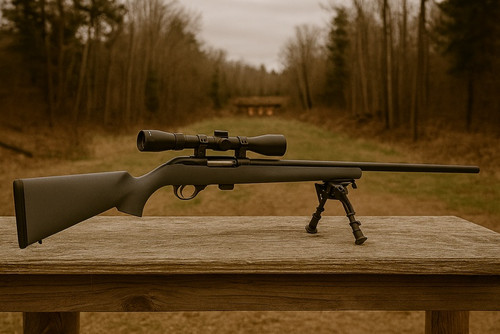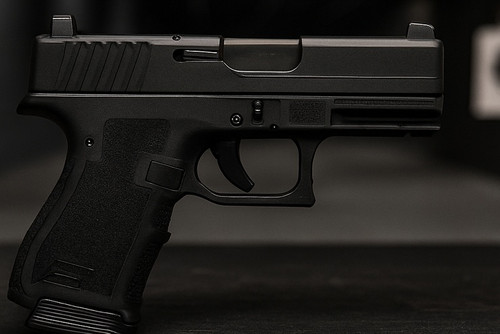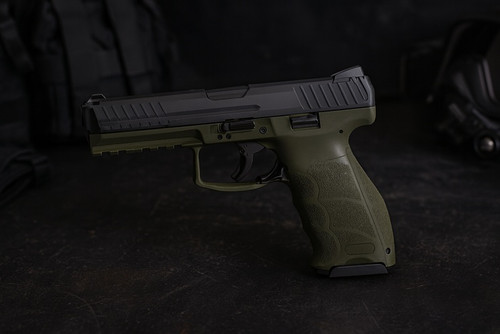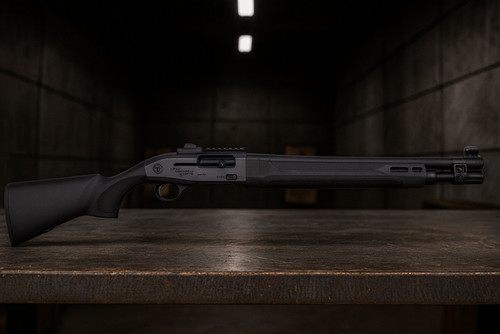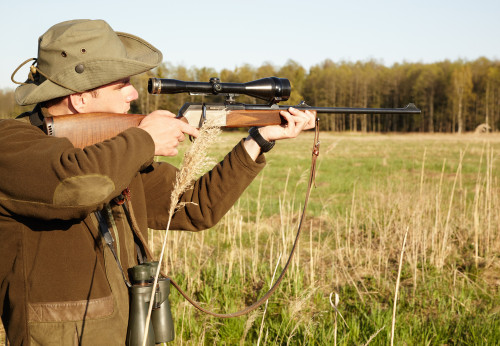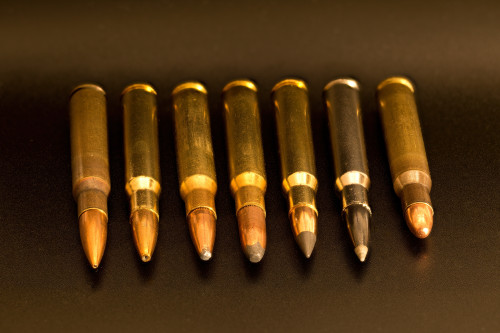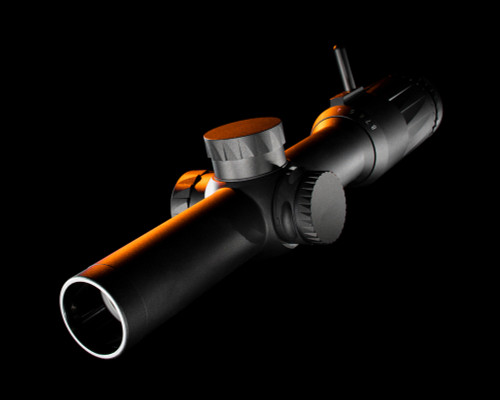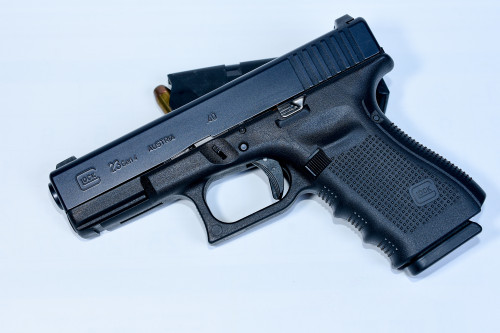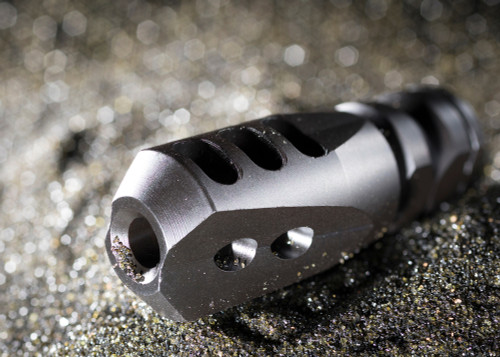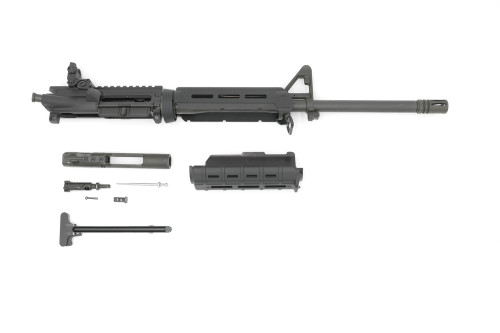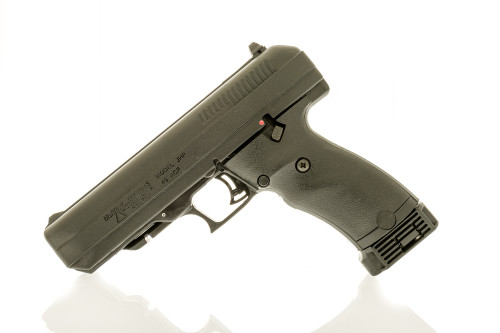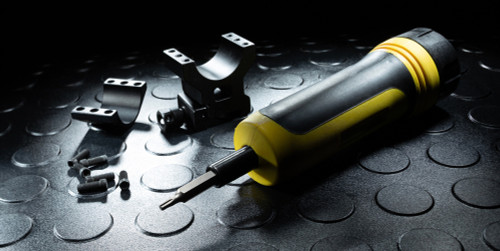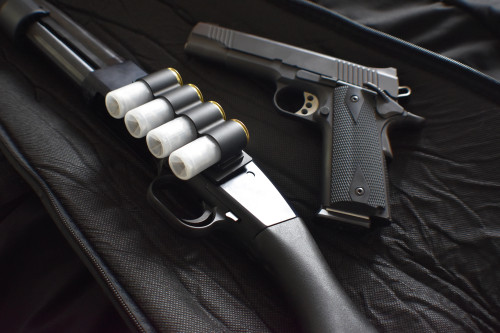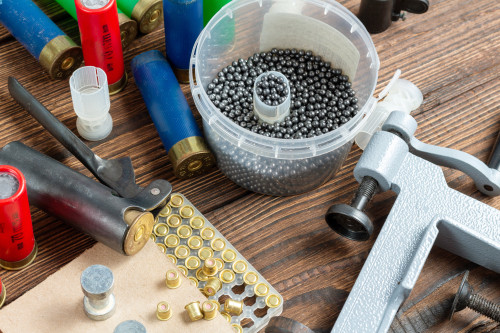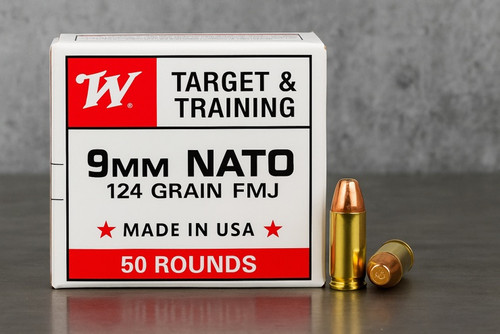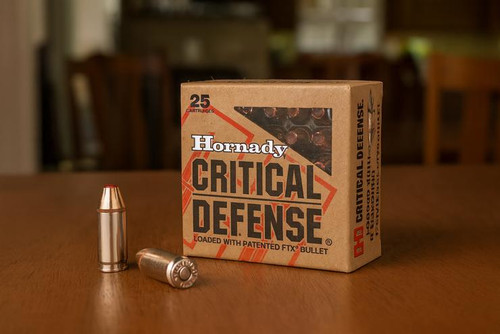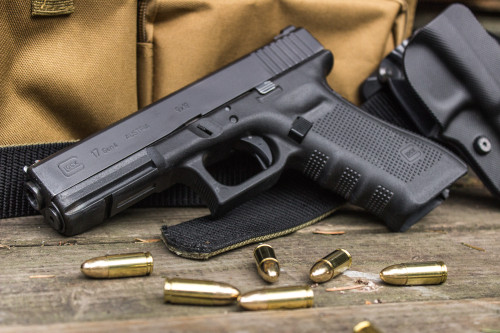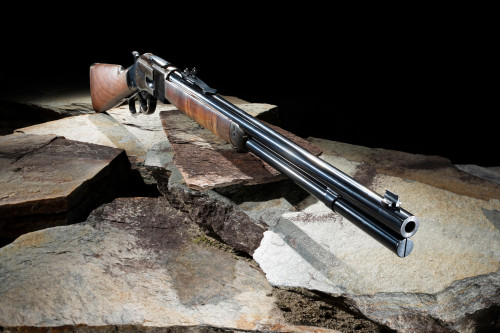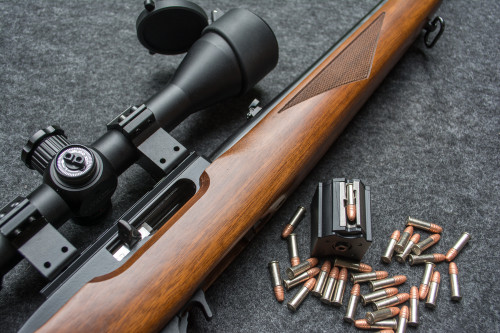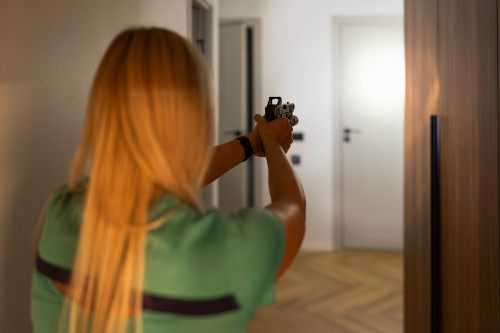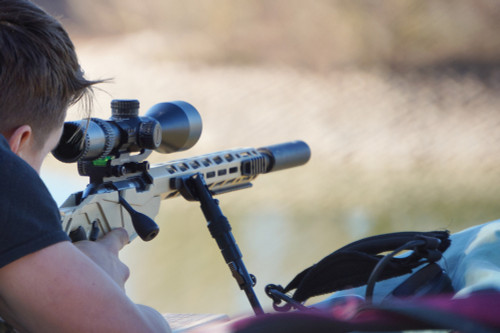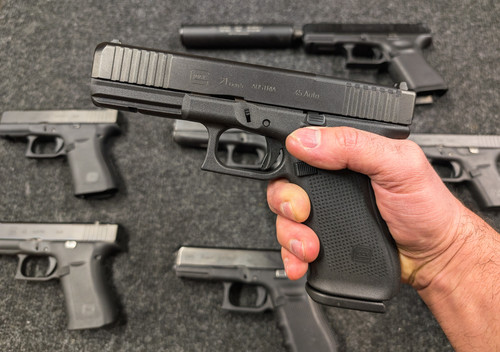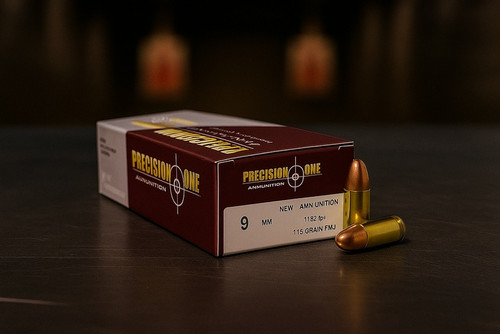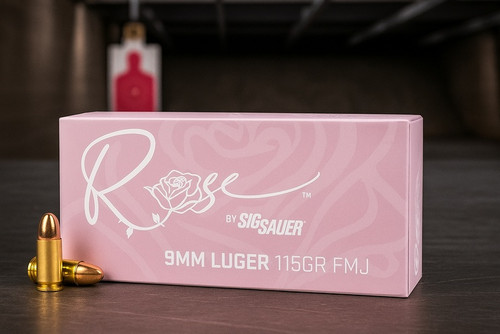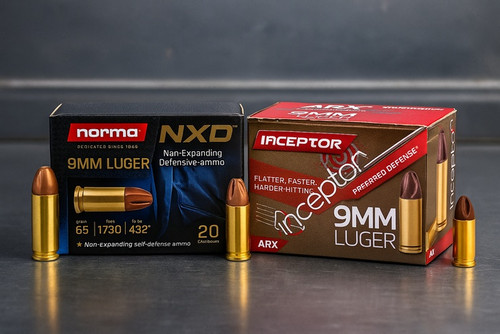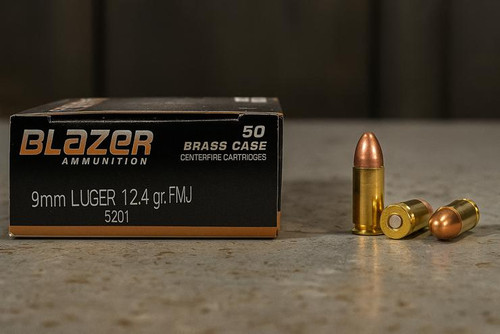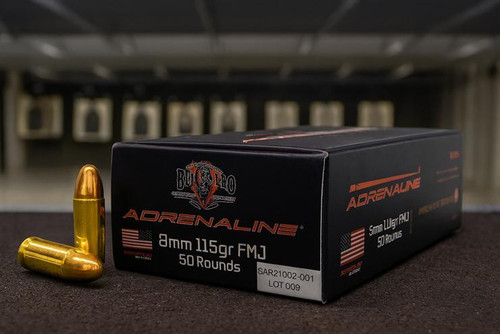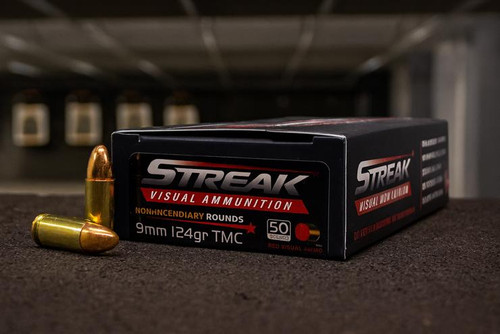Quick Answer
The Nightforce ATACR 7-35×56 is widely praised for sharp, clean glass and image quality, the Vortex Razor HD Gen III for its hard-use build, and the Bushnell Match Pro ED 5-30×56 for strong value to budget-minded buyers. Pick the scope that fits your needs and budget; clear glass and solid tracking often matter more than chasing the highest magnification in real use.
Key Takeaways
- Glass clarity and reticle design matter more than high magnification for long-distance accuracy.
- Budget scopes can work at 800 yards, but premium glass excels beyond 1,000.
- Our testing rated scopes on clarity, magnification, eye box, and tracking precision.
- Zero stops and tracking consistency separate good scopes from great ones.
- A common guideline is to budget roughly as much for quality glass as for the rifle, especially for ELR/PRS.
"I missed that shot at 800 yards by six inches," I recall, shaking my head. "It wasn't the gun's fault. It was the budget scope I'd mounted. Next month, I invested in proper glass, same distance, same conditions - hit dead center."
My experience mirrors what expert marksmen have preached for decades: "Spend as much on glass as on your gun." It's advice that might save you thousands of rounds of wasted ammunition and countless missed opportunities.
What Makes the Best Scope for Long Range Shooting?
When your targets stretch past 600 yards, the scope becomes just as important as the rifle itself. A good optic can be the difference between a lucky hit and a clean, repeatable shot at 1,000 yards or more.
So what really sets a top scope apart from an average one? Let’s break it down.
Glass Quality
This is the base of everything. Good glass gives you bright, sharp views, even when the light is low. It keeps images crisp at higher zoom levels. Cheap scopes often fall apart here. You’ll notice blur at the edges or haze when magnification goes up.
Magnification Range
For real long-range work, you’ll want at least 18x to 20x zoom. Many serious shooters prefer 25x or more when they’re stretching shots to extreme distances. But remember, high zoom with bad glass is worse than lower zoom with clear glass.
Reticle Design
The reticle makes or breaks long shots. A well-designed reticle helps with wind calls, holdovers, and ranging. First focal plane (FFP) reticles are popular because they stay accurate at every zoom level. That makes them a smart pick for distance shooting.
Turret Precision
Your turrets must be dead-on. Each click should shift your impact exactly as promised, with no surprises. And they need to come back to zero every time. This matters most when dialing for extreme distance, where even tiny errors add up fast.
Build Strength
A scope for long shots takes a beating. It deals with recoil, hard weather, and the occasional bump. Quality scopes are sealed tight against water and dust. They’re also purged with gas to stop fogging inside the tube. That toughness keeps them working no matter the conditions.
Customers visiting stores often want to try optics on guns before purchasing, and brick-and-mortar retailers can provide this valuable experience. As experts at the National Shooting Sports Foundation note, letting customers shoulder a stock and look through a scope the way they would when actually shooting is a significant advantage physical stores have over websites.
How We Tested the Scopes
We wanted the comparison to feel fair across every model. So we looked at six scopes from different makers and studied them closely. Instead of live testing, we leaned on detailed specs, feedback from actual owners, and trusted expert reviews.
All the scopes used first focal plane designs with MIL reticles. One had MOA. We focused on models in the 4–36x magnification range. That range is often suggested for accurate shots out to around 1,000 yards.
We also noted outside factors. Things like temperature, pressure, and elevation were taken from reported field data. This helped keep the comparisons steady.
One big part of the evaluation was tracking accuracy. Here’s what mattered:
- Do the turrets move the point of impact the way they’re marked?
- When you dial back to zero, does the shot land right back where it started?
To answer that, we leaned on methods already trusted in the shooting community. We didn’t run our own live trials but we built the review on structured research instead.
When working with MOA adjustments, remember to always think in increments relative to your distance. The National Shooting Sports Foundation recommends a simple approach: divide your distance (in yards) by 100 to determine how big 1 MOA is in inches at that range.
Each scope was then weighed on four key points:
- Clarity: How sharp and clean the glass looks
- Eye Box: How easy it is to line up a full sight picture
- Magnification: The range and how clear the view stays throughout
- Value: What you get for the price compared to the features
Best Scope for Long Range Shooting: Quick List
- Best Glass – Nightforce ATACR 7-35×56
- Best Tactical – Bushnell Elite Tactical 6-36×56 XRS3
- Most Durable – Vortex Razor HD Gen III 6-36×56
- Best High-End – Schmidt & Bender PMII 6-36×56
- Best Mid-Tier – Primary Arms GLx 3-18×44
- Best Budget – Bushnell Match Pro ED 5-30×56
Best Long Range Rifle Scopes Reviewed
| Scope Model | Magnification | Objective Lens | Eye Relief | Weight | Tube Diameter |
|---|---|---|---|---|---|
| Nightforce ATACR 7-35×56 | 7–35× | 56 mm | 3.6 in | 39.3 oz | 34 mm |
| Bushnell Elite Tactical XRS3 6-36×56 | 6–36× | 56 mm | 4.0 in | 38.9 oz | 34 mm |
| Vortex Razor HD Gen III 6-36×56 | 6–36× | 56 mm | 3.5 in | 45.1 oz | 34 mm |
| Schmidt & Bender PMII 6-36×56 | 6–36× | 56 mm | 3.5 in | 33.1 oz | 34 mm |
| Primary Arms GLx 3-18×44 | 3–18× | 44 mm | 3.5 in | 29.6 oz | 34 mm |
| Bushnell Match Pro ED 5-30×56 | 5–30× | 56 mm | 3.8 in | 32 oz | 34 mm |
Nightforce ATACR 7-35×56 – Best Glass
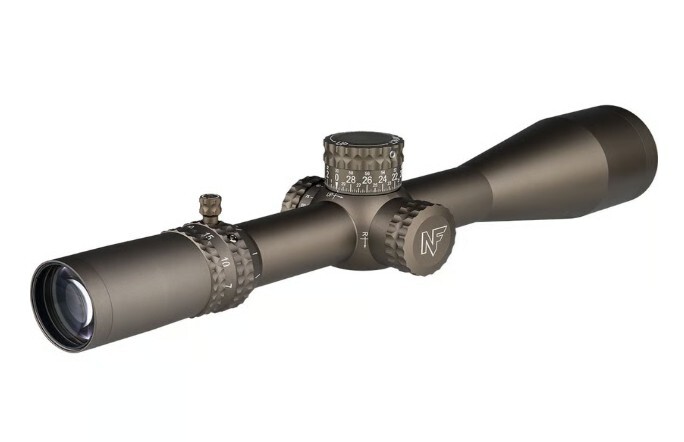
The Nightforce ATACR line has a long record of being used by pros in the field. From military snipers to competition ranges to big hunts, this series is known for one thing and that is the glass. The 7-35×56 model shows the very best of what Nightforce can do.
What makes it stand out is the clarity. Edge to edge, the image stays sharp. Even cranked up to 35x, you can still see tiny details with barely any distortion. That level of sharpness matters. It lets you pick out targets and place shots cleanly even in fading light—times when many other scopes start to lose the picture.
This scope also carries a strong battle record. The ATACR has been used by U.S. forces in some of the harshest places on earth. It’s tested against MIL-STD-810G standards, which means it can deal with extremes—heat, cold, moisture, dust, salt, shock. If the environment is rough, it’s built to handle it.
It’s not small or light. At 16 inches long and just under 40 ounces, you’ll feel the weight. But that size isn’t wasted—it’s what gives the scope its toughness. It holds zero even after thousands of rounds. The ZeroStop turret system is simple and positive. Spin back fast to your zero without needing to glance at the dial.
Price: $2,800
Specs
- Magnification: 7–35×56mm
- Reticle: MIL-XT
- Eye Relief: 3.6 in
- Weight: 39.3 oz
- Tube Diameter: 34mm
- Elevation Adjustment: 100 MOA (model-dependent); ample travel for long-range with a canted base.
- Waterproofing: Yes
Features
- ZeroStop turret system for easy zero return
- Military-grade stress testing
- ED glass for superior light transmission
- Digillum illuminated reticle
- Fully multi-coated lenses
Pros
- Outstanding optical clarity at all magnifications
- Extremely durable, combat-proven construction
- Excellent reticle precision with intuitive layout
- Positive turret adjustments with distinct tactile feedback
- Superior low-light performance
Cons
- Heavy design at nearly 40 ounces
- Premium price puts it out of reach for many
- Minor tunneling when moving to lower magnifications
- Length requires proper mounting solutions
Bushnell Elite Tactical 6-36×56 XRS3 – Best Tactical
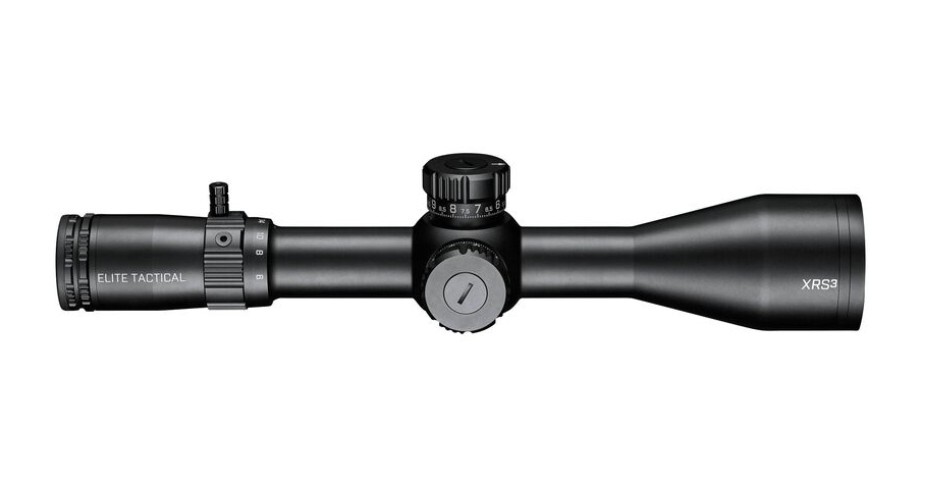
The Elite Tactical series has been part of Bushnell’s lineup for more than 20 years. Over time, it’s been shaped and improved with direct feedback from professionals. The XRS3 is the newest version, and it shows clear upgrades over the earlier models.
The scope body is cut from a single block of billet aluminum. That 34mm tube gives it serious strength without adding unnecessary bulk. The 56mm objective lens pulls in plenty of light, and the newer multi-coated glass brings a big step up in brightness and clarity compared to past generations.
One standout feature is the greatly enhanced eye box compared to the XRS II predecessor. Even at maximum 36x magnification, acquiring and maintaining a full sight picture is remarkably forgiving—a critical advantage during long shooting sessions or in field positions.
The locking diopter is an intelligent addition for tactical shooters. Once set, it prevents accidental adjustment when moving between positions or during transport. Combined with the crisp, positive-click turrets and the effective Revlimiter zero stop, this scope is purposely designed for serious practitioners who demand absolute consistency.
Price: $1,749
Specs
- Magnification: 6–36×56mm
- Reticle: EQL
- Eye Relief: 4.0 in
- Weight: 38.9 oz
- Tube Diameter: 34mm
- Elevation Adjustment: 29 MIL
- Windage Adjustment: 15 MIL
- Waterproofing: IPX7
- Fogproofing: Argon Gas Purged
Features
- Revlimiter zero stop system
- 34mm billet aluminum main tube
- Locking diopter for field stability
- EXO Barrier lens protection
- ED Prime glass for enhanced clarity
Pros
- Smart reticle layout with multiple floating dots
- Crisp, defined turret clicks
- Excellent eye relief at 4 inches
- Clear ED glass with minimal distortion
- Well-regarded for tracking consistency in independent tests; research showed precise, repeatable adjustments.
Cons
- No illumination option for low light
- Slightly lower field of view at maximum power
- Substantial investment for non-professionals
Vortex Razor HD Gen III 6-36×56 – Most Durable
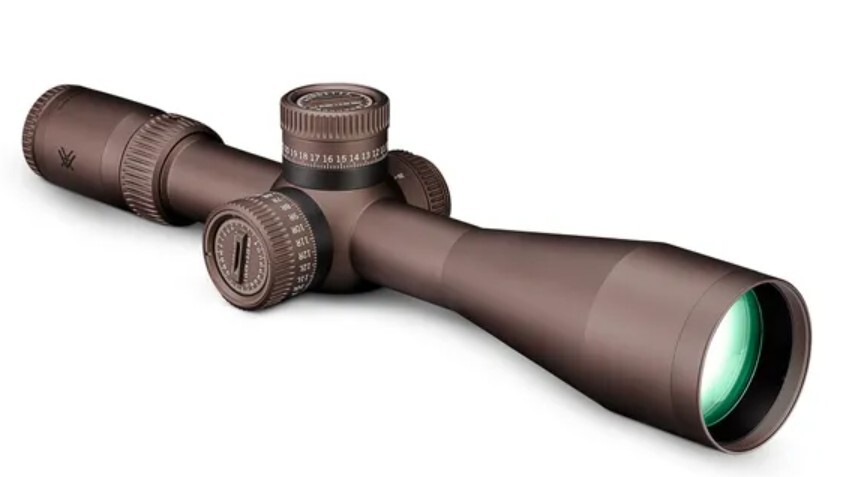
The Vortex Razor HD Gen III is aptly described as a tank among precision optics. Until recently, Vortex was often considered a mid-tier manufacturer, but the Razor HD line changed that perception completely, establishing Vortex as a serious competitor in the premium optic space.
Everything about this scope screams attention to detail. The exposed locking turrets are substantial without feeling clumsy, providing tactile feedback that's impossible to miss even with gloved hands. The 15.25-inch aircraft-grade aluminum body with ArmorTek coating can withstand abuse that would render lesser optics useless.
A game-changing feature is the L-Tec+ zero-stop with micro-adjust zero and locking turrets . Unlike most scopes that limit you to specific click values, the Razor allows you to set your zero between clicks for the ultimate in precision. This level of adjustment is something typically found only on scopes costing significantly more.
The glass quality in the Gen III is nothing short of spectacular. There is zero distortion across the entire field of view, even at edges where most scopes struggle. At 36x magnification, the clarity is so exceptional you can actually see heat mirage and dust in the air—which can be both an advantage and occasionally a challenge.
Price: $2,999–$4,800
Specs
- Magnification: 6–36×56mm
- Reticle: EBR-7D (MOA)
- Eye Relief: 3.5 in
- Weight: 45.1 oz
- Tube Diameter: 34mm
- Elevation Adjustment: 120 MOA
- Windage Adjustment: 52.5 MOA
- Lens Coating: XR Plus Fully Multi-Coated
Features
- Aircraft-grade aluminum body
- ArmorTek scratch-resistant coating
- Legendary Vortex lifetime warranty
- Infinite zero adjustment capability
- Illuminated reticle for low-light conditions
Pros
- Nearly indestructible design
- Exceptional glass clarity with zero distortion
- Innovative infinite zero adjustment system
- Windage tree reticle design for quick holdovers
- Backed by industry-leading warranty service
Cons
- Heaviest scope on our list at 45.1 ounces
- Very expensive with MSRP up to $4,800
- Long scope body requires appropriate mounting
- May be more scope than many shooters need
Schmidt & Bender PMII 6-36×56 – Best High-End
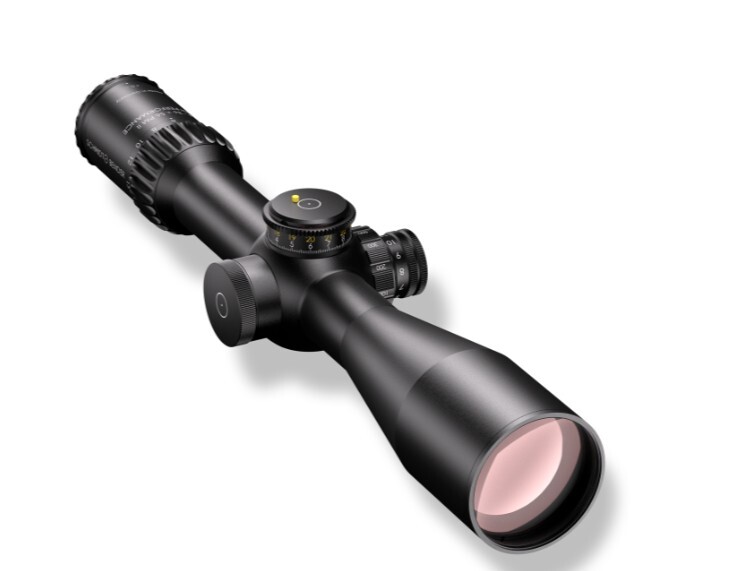
Schmidt & Bender represents the apex of German optical engineering, and the PMII 6-36×56 showcases why these scopes are revered by elite military units and discriminating civilian shooters worldwide. The craftsmanship is immediately apparent from the moment you handle one.
Manufactured to meet MIL-STD-810G specifications, the PMII undergoes testing that exceeds what most scopes will ever encounter in real-world use. It's subjected to extreme atmospheric pressures, temperature fluctuations, salt exposure, humidity variations, and impact forces that would render most optics unusable.
One unique innovation is the LPI (Leuch-Parallaxe Integriert) system that combines parallax adjustment and illumination control in a single knob. This integration not only streamlines operation but also makes the PMII more accommodating for left-handed rifles by freeing up space on the tube for mounting options.
The turret system on the PMII offers an unusual level of customization. Users can select from different resistance levels—from standard click feedback to pronounced tactile clicks that are impossible to miss even under stress. This adaptability to shooter preference is rarely seen even in premium optics.
Price: $4,080–$4,800
Specs
- Magnification: 6–36×56mm
- Reticle: Gr2ID
- Eye Relief: 3.5 in
- Weight: 33.1 oz
- Tube Diameter: 34mm
- Elevation Turret: 395cm/100m MT II MTC LT
- Windage Adjustment: ± 65cm/100m DT II+ ZC LT
Features
- Integrated illumination + parallax knob (LPI)
- Multi-setting turret feedback options
- Advertised 90% light transmission
- MIL-STD-810G certified construction
- Customizable turret configurations
Pros
- Legendary glass quality with exceptional clarity
- Extremely durable under harsh conditions
- Intuitive GR2ID reticle with alternating colors
- Lighter than competitors at 33.1 ounces
- Combat-proven in military applications
Cons
- Premium price point limits accessibility
- minor tunneling at the extreme low end (common in very wide-range optics).
- May require professional mounting service
- Limited availability in some markets
Primary Arms GLx 3-18×44 – Best Mid-Tier
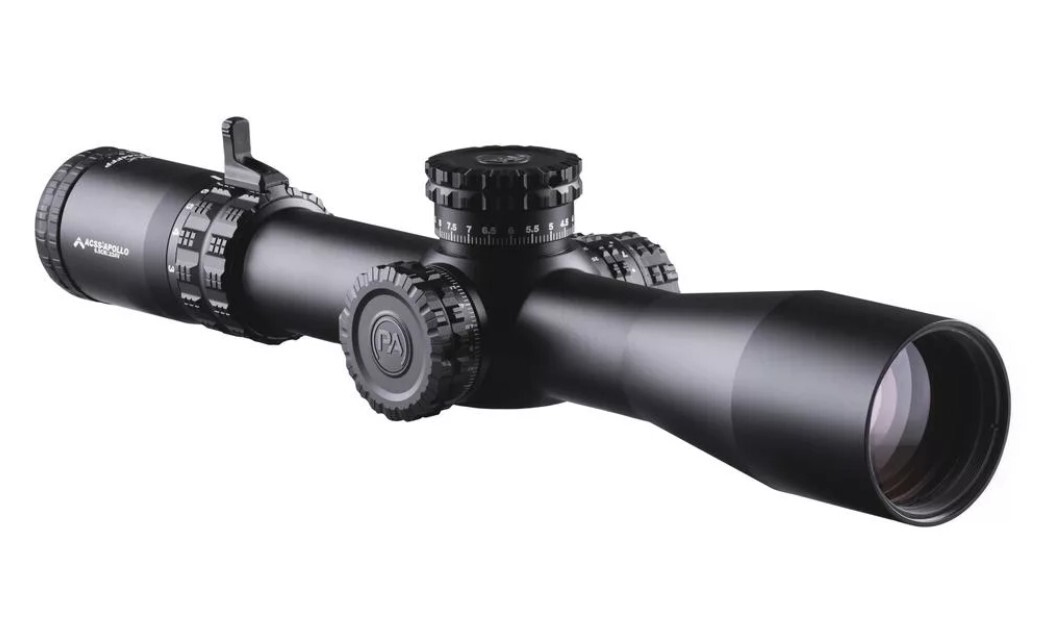
Primary Arms has steadily improved their optics lineup over the years, and their GLx series represents the sweet spot between budget and premium offerings. The GLx 3-18×44 proves that excellent performance doesn't always demand premium pricing.
The 34mm main tube provides substantial elevation adjustment capacity—listed as 180 MOA (52.4 mrad) on many GLx 3-18×44 models, though you should verify the exact MOA/mrad for your specific model and reticle. This generous adjustment means you can dial well past mid-range without needing a canted base.
Where the GLx truly shines is its ACSS Athena BPR reticle, which might be the most user-friendly option in this entire lineup. The chevron center aiming point offers precise targeting without obscuring small targets, and the overall layout facilitates ranging, holdovers, and wind compensation with minimal mental calculation.
The quality jump between Primary Arms' entry-level SLx line and this GLx scope is substantial. The glass clarity, turret feel, and overall construction are dramatically improved, putting this scope in contention with optics costing considerably more.
Price: $679
Specs
- Magnification: 3–18×44mm
- Reticle: ACSS Athena BPR MIL
- Eye Relief: 3.5 in
- Weight: 29.6 oz
- Tube Diameter: 34mm
- Elevation Adjustment: Generous internal travel for the class (verify exact value by model/reticle)
- Windage Adjustment: 120 MOA
Features
- Locking turrets with zero return
- Illuminated reticle with 11 brightness settings
- ACSS Athena BPR reticle system
- First focal plane design
- Fully multi-coated lenses
Pros
- Excellent value at sub-$700 price point
- Intuitive, easy-to-use ACSS reticle system
- Compact and lightweight design
- Substantial elevation adjustment range
- Robust turrets with positive clicks
Cons
- Some edge distortion at higher magnifications
- Eye box less forgiving than premium options
- Lower maximum magnification than others tested
- Not ideal for extreme distances beyond 800 yards
Bushnell Match Pro ED 5-30×56 – Best Budget
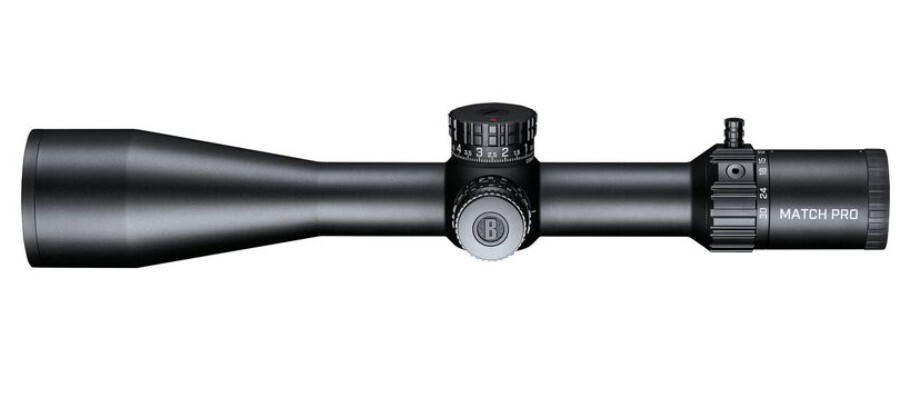
The Match Pro ED represents Bushnell's response to actual shooter feedback, incorporating suggested improvements to their 2019 Match Pro scope. The result is perhaps the most feature-rich option available under $800.
The main tube was expanded from 30mm to 34mm, allowing for a dramatic increase in elevation travel—from 18 MRAD to a full 30 MRAD. This substantial adjustment range means the scope can reach extreme distances without resorting to angled mounts or holdovers.
One of the most impressive upgrades is the Extra-Low Dispersion Prime (ED) glass paired with the larger 56mm objective lens. The image quality is markedly improved from the original Match Pro, with minimal distortion even at the edges. Bushnell's EXO Barrier coating further enhances performance by repelling moisture and debris.
The turrets are a standout feature, offering a unique Rev-Indicator system that clearly shows which revolution you're on when adjusting elevation. The clicks are positive and distinct, and the zero stop implementation is both easy to set and secure once established. During tracking tests, the Match Pro performed flawlessly—not surprising given Bushnell's reputation for turret consistency.
Price: $749
Specs
- Magnification: 5–30×56mm
- Reticle: Illuminated tree-style MRAD reticle (Bushnell Deploy MIL family), 0.2-mil grid with floating center.
- Eye Relief: 3.8 in
- Weight: 32 oz
- Tube Diameter: 34mm
- Elevation Adjustment: 30 MRAD
- Windage Adjustment: 14.5 MRAD
- Waterproofing: IPX7
- Fogproofing: Argon Gas Purged
Features
- EXO Barrier lens protection
- 34mm main tube for extended adjustment range
- Rev-Indicator system for turret revolution tracking
- Easy-to-set zero stop
- Floating center dot reticle design
Pros
- Outstanding value for feature set
- Well-designed illuminated reticle
- Intelligent turret design with clear markings
- Substantial adjustment range
- Good optical clarity for the price point
Cons
- Magnification adjustment not as smooth as premium options
- Glass clarity good but not comparable to high-end models
- Heavier than some competitors at similar price points
Honorable Mentions
Two other brands frequently mentioned in discussions about premium long-range optics deserve recognition: Zero Compromise Optic (ZCO) and Tangent Theta.
Both manufacturers expressed interest in participating in this comparison but couldn't provide test samples due to production constraints and staffing limitations. Based on brief handling at industry events and feedback from professional users, both brands offer exceptional optical quality and mechanical precision.
ZCO in particular has rapidly gained a following among competitive precision rifle shooters, with many top competitors choosing their scopes for major matches. Tangent Theta likewise has earned respect for their optical clarity and robust construction.
If your budget extends to the premium tier, both brands merit serious consideration alongside our tested options.
By the Numbers: Comparison Chart
After extensive testing, we rated each scope on four key criteria using a 1-5 scale (5 being the highest score).
Clarity
Clarity refers to the quality of the glass and how clear the picture appears.
| Model | Clarity Rating (1–5) |
|---|---|
| Bushnell Match Pro ED 5-30×56 | 3.75 |
| Bushnell Elite Tactical 6-36×56 XRS3 | 4.5 |
| Primary Arms GLx 3-18×44 | 3.5 |
| Vortex Razor HD Gen III 6-36×56 | 5 |
| Nightforce ATACR 7-35×56 | 4.75 |
| Schmidt & Bender PMII | 5 |
Magnification
This rating evaluates both the magnification range and how easy adjustments are to make.
| Model | Magnification Rating (1–5) |
|---|---|
| Bushnell Match Pro ED 5-30×56 | 4 |
| Bushnell Elite Tactical 6-36×56 XRS3 | 4 |
| Primary Arms GLx 3-18×44 | 4 |
| Vortex Razor HD Gen III 6-36×56 | 5 |
| Nightforce ATACR 7-35×56 | 5 |
| Schmidt & Bender PMII | 5 |
Eye Box
The eye box rating reflects how easy it is to obtain a full sight picture.
| Model | Eye Box Rating (1–5) |
|---|---|
| Bushnell Match Pro ED 5-30×56 | 4 |
| Bushnell Elite Tactical 6-36×56 XRS3 | 4.5 |
| Primary Arms GLx 3-18×44 | 3 |
| Vortex Razor HD Gen III 6-36×56 | 4.5 |
| Nightforce ATACR 7-35×56 | 4.25 |
| Schmidt & Bender PMII | 4.25 |
Value
Value measures features and performance relative to price.
| Model | Value Rating (1–5) |
|---|---|
| Bushnell Match Pro ED 5-30×56 | 4 |
| Bushnell Elite Tactical 6-36×56 XRS3 | 4.5 |
| Primary Arms GLx 3-18×44 | 3.5 |
| Vortex Razor HD Gen III 6-36×56 | 4.5 |
| Nightforce ATACR 7-35×56 | 4.5 |
| Schmidt & Bender PMII | 4.5 |
Overall
The final average score across all categories
| Model | Overall Rating (1–5) |
|---|---|
| Bushnell Match Pro ED 5-30×56 | 4 |
| Bushnell Elite Tactical 6-36×56 XRS3 | 4.5 |
| Primary Arms GLx 3-18×44 | 3.5 |
| Vortex Razor HD Gen III 6-36×56 | 4.7 |
| Nightforce ATACR 7-35×56 | 4.5 |
| Schmidt & Bender PMII | 4.7 |
How To Choose the Best Scope for Your Purpose
The “best” scope really depends on what you need it for, how much you want to spend, and the kind of shooting you’ll be doing. Here’s how to narrow things down.
For Budget-Conscious Buyers:
If you’re starting out or keeping costs low, the Bushnell Match Pro ED is a great pick. It’s around $750 but brings features you’d normally see on scopes twice that price. Another strong option is the Primary Arms GLx 3-18×44 at $679, especially if you like the ACSS reticle style.
For Competitive Shooters:
Serious competition calls for sharp glass and tracking you can trust every time. The Vortex Razor HD Gen III and the Nightforce ATACR hit that balance of performance and price. Both give clear views and rock-solid adjustments built for match conditions.
For Military or Tactical Use:
The Bushnell Elite Tactical XRS3 was built for this role. It was designed with input from pros in the field. Strong build, tactical-focused features—it’s made for hard use. The Nightforce ATACR also stands out here with a long record of success in real-world combat.
For Those With Unlimited Budget:
If money isn’t an issue, the Schmidt & Bender PMII is the peak of scope design. The glass is incredibly clear, the mechanics are dialed in, and it offers loads of custom options.
When it comes to magnification, a simple rule is about 1x for every 100 yards. But most long-range shooters push for more precision:
- 600–800 yards: at least 15–20x
- 800–1,000 yards: at least 20–25x
- Beyond 1,000 yards: 25x or more is best
And here’s something often overlooked—scope setup. Experts at Rifle Shooter Magazine say consistent long-range shooting depends heavily on proper installation. That includes mounting height. Don’t just follow generic advice. Set it up for your needs.
Final Thoughts
Scope makers keep pushing forward—better glass, smoother turrets, smarter features. The scopes we reviewed are among the best right now, but new challengers pop up all the time.
A useful method suggested by hunting experts is the 1× per 100 yards rule. At 300 yards, for example, you'd select 3× magnification. This keeps your target appearing roughly the same size as it would at 100 yards, which is a comfortable distance for your eyes to process.
As Shooting Illustrated notes, long-range shooting involves many factors beyond just the rifle quality glass, proper spotting, and shooter technique all play crucial roles. A scope with elite tactical features can make the difference between connecting with distant targets and missing consistently.
For those serious about long-range precision, scope mounting height deserves careful consideration. A low mount close to the barrel often suits hunting in the field, especially when point-blank shots can happen; but PRS/ELR and prone competitors often pick taller mounts to improve head position and to keep magazine and bolt clear. In prone or PRS-style stages, a slightly higher mount can sharpen cheek weld and sight alignment—so choose a height that matches your stock, your cheek weld, and your objective-clearance needs.
At the end of the day, remember this: practice matters more than the scope itself. Even the finest optic won’t help if your fundamentals aren’t strong. Invest in good gear, sure—but invest even more in your time behind the trigger. That’s where real progress comes from.
Alternative optics: If long-distance precision isn’t what you need, check out our breakdowns of the Top 5 Best Scout Scopes Reviewed and the Best LPVO Scopes for closer-range versatility.
Frequently Asked Questions (FAQs)
What magnification is best for 1,000 yards?
For that distance, you’ll want at least 18–20x magnification. Around 25–30x makes aiming even easier. But don’t chase numbers alone—clear glass matters far more than raw magnification. A sharp 20x view will beat a blurry 30x every time.
Do I need a first focal plane reticle?
For long shots, yes—it really helps. With a first focal plane reticle, the scale stays the same at every zoom level. That means your holdovers, ranging, and wind holds remain accurate no matter how much you zoom in.
What’s more important: magnification or glass quality?
Glass quality wins, hands down. Cranking magnification with poor glass only makes targets harder to see. A scope with clean, sharp glass at 15x will outperform a cloudy scope at 25x.
Are expensive scopes worth it for beginners?
If your budget can handle it, better glass from the start will save you frustration and speed up learning. But you don’t need to overspend. The Bushnell Match Pro ED, for example, is a solid starting point. You can always upgrade later as your skills grow.
How do I test turret tracking at home?
Try a simple box test. Set a target at 100 yards. Fire at the center. Dial 20 clicks up, shoot again. Then 20 clicks right, shoot. Next, 20 clicks down, shoot. Finally, 20 clicks left and shoot. You should see a neat square. The last shot, after returning to zero, should land close to your very first one.
About the Author
This article was written by the Pro Armory writing team. Our work draws on research from trusted sources like the Journal of Military Science, Firearms News, and the National Shooting Sports Foundation. We also used guidance from official defense publications, the ATF, the NRA, and manufacturer manuals.
Disclaimer: This guide is for learning purposes only. Your own results may differ. Always put safety first, read your firearm’s manual, and follow every law and rule when handling any gun or related equipment.




 Pro Armory Editorial Team
Pro Armory Editorial Team